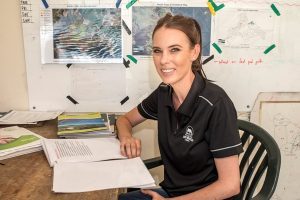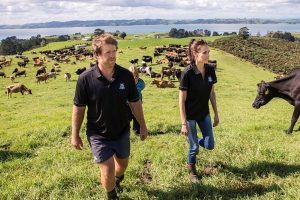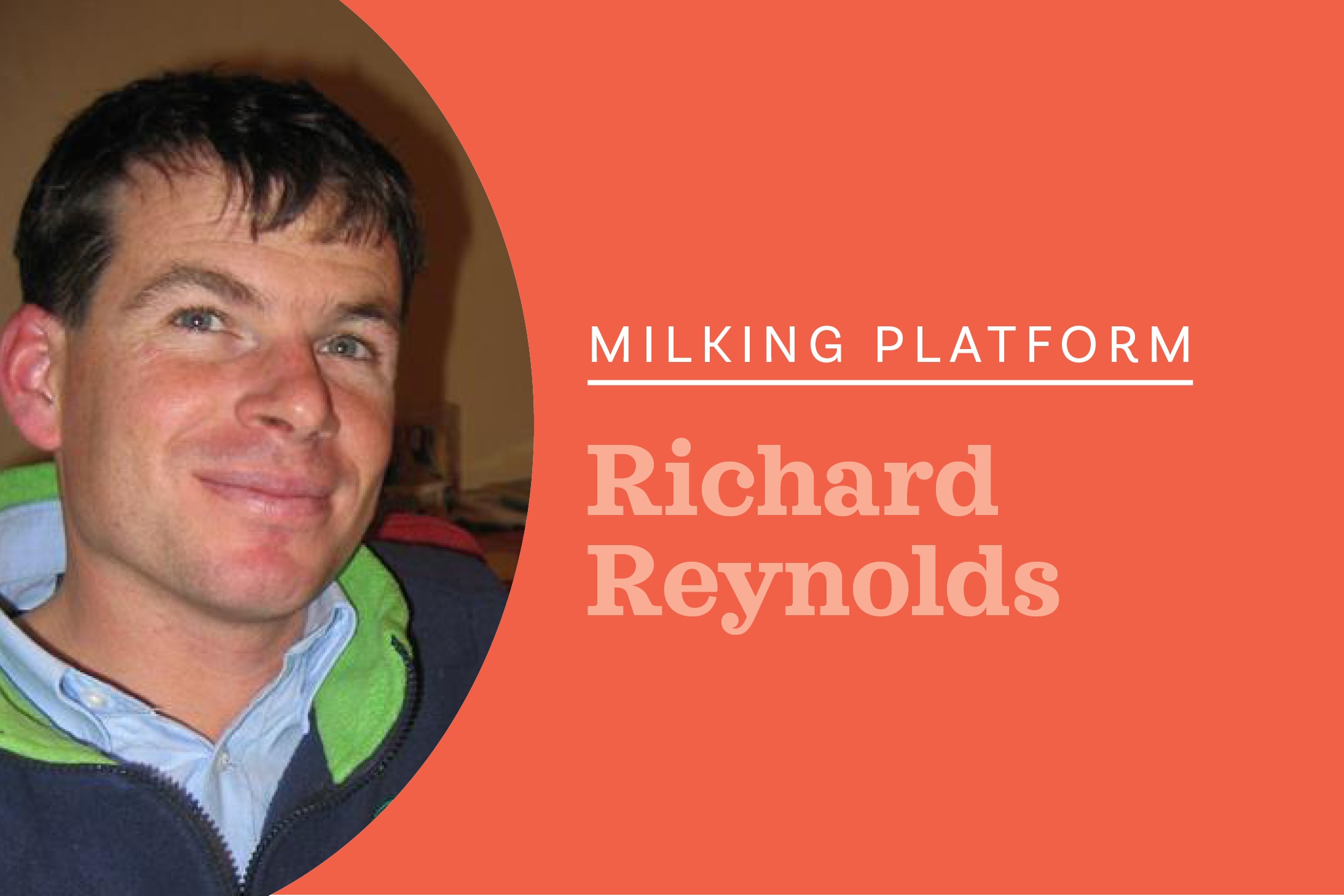Glenys Christian
Northland Share Farmers of the Year Dan and Gina Duncan are in their second season on a 1020-cow 50:50 sharemilking job in Pouto, for the Pouto Topu A Trust. After contract milking for three seasons in the Waikato they felt they needed to take the next step and secure a sharemilking position.
“We were looking for something with scale, at least 600 cows, and those are few and far between in the Waikato, so we broadened our search nationwide” Dan says. They came across an ad on Farm Source for a 50:50 job on two Northland farms with the possibility of the successful applicant farming both.
“The first time I had been over the harbour bridge was when we went up to the open day,” Gina says.
Accepting the job was a major decision for the couple but “it ticked too many boxes to be ignored”. Seeing the opportunity for growth by increasing cow numbers and increasing farm production through management changes, they felt even in a low-payout environment it was the right time to make the move and capitalise on low cow
prices. “While we were looking at a loss in the first season we were okay with that knowing there would be equity growth in the background,” Dan says.
“It was a calculated risk, but luckily the payout increased and we haven’t looked back,” Gina says.
The couple run an 11-on 3-off roster and employ a herd manager and farm assistant on one farm and a 2IC and assistant on the other with a casual worker and Dan going between both farms. All staff live on the isolated farm more than 50 kilometres south of Dargaville, near the end of the Pouto Peninsula, on the northern side of the Kaipara Harbour.
Using OAD through mating does mean we lose a bit of production but getting cows in calf early is more important.
Dan comes from a dairy farming background with his parents having farmed in the Waikato. He completed a Bachelor of Applied Science at Massey University with a double major in rural valuation and management and agriculture. He and Gina (both 32), who is from Nelson and also has a degree in rural valuation, met in the halls of residence.
In 2008 they found their first jobs as rural valuers in Tauranga where they worked for the next four years. For the 2012/13 dairy season Dan took a herd manager’s job in Matamata, which was where he first entered the Dairy Industry Awards in the Dairy Trainee section and placed second.
Gina commuted to work in Tauranga and did the same when they moved to 620-cow contract milking position in Tokoroa the following year. It was a quick step up from one year as herd manager to contract milking and the workload in that first season was “crazy”, Gina says.
During calf rearing her workload involved waking at 4am, putting in the 9-to-5 working day in the Tauranga office, then both getting home to fall into bed at 8 or 9pm. In 2014 with the birth of their first son Lachie she was able to work part-time from home, a much better balance while Dan had the farm in much better order, lowering the workload at his end also. With the arrival of their second son, Brock, this January she’s still able to work remotely for the same valuation firm.

The Duncans are used to hard work with the Tokoroa farm they left being part of a forestry conversion, but this was another challenge altogether. “The first challenge was to put a herd together, we were warned numerous times by different people not to bring cows over the bridge due to theileria,” Dan says and they planned to move the calving date from July 5 to June 25 which limited the market even further. They ended up buying part of the two herds already on the farms, owned by the trust and previous sharemilker, and then made up the extra numbers they needed from R2s in Northland.
Being a system 2 grass-based operation was another drawcard for the couple, however they had no experience dealing with kikuyu pastures, which required a lot of focus. The Duncans have had to adapt to kikuyu in their pastures as well as country which dries out quickly, so are constantly monitoring. As part of Dan’s attention to detail, he uses a CDax tow-behind pasture meter to cover most of the farm every 10 days in spring.
“I don’t do it as regularly if there’s a drought, but through the rest of the season that will happen every two or three weeks to get a full picture,” he says.
Pasture renovation has been increased with about 65ha or 14% of the farm being cropped each season. Last season they used both Trojan and Excess perennial ryegrasses and included two clovers. About 120kg of nitrogen is applied each season and maintenance fertiliser is split into four dressings.
Around 220ha of kikuyu-dominant pasture was mulched last autumn and with an airseeder mounted on the mulcher, carrying out mulching and seeding in a single pass.
About 93% of their cows’ diet is made of home-grown feed. This sees pasture at 75% (3320Kg DM/cow/year), 8% maize silage (355kg DM/cow/year), 7% turnips (315kg DM/cow/year) and grass silage at 2% (85kg DM/cow/year). Imported supplement consists of 5% palm kernel (235kg DM/cow/year) and winter grazing at 2% (110kg DM/cow/year).
The farm has a 40ha effluent area served by a weeping wall and low-dose pods. There are plans to re-fence wetland areas before the end of May with the assistance of a grant from Northland Regional Council.
The couple run a herd of 430 cows on the 180ha farm, and 590 cows on the 280ha farm which is split into two herds, with one herd being milked once-a-day (OAD) all season. This herd of about 280-300 cows is made up of heifers, late calvers and any other cows needing attention. OAD is a useful tool the couple use to manage animal health issues, long walks to the dairy shed and during mating.
“Our pre-mating heats in the first season were poor, we made the decision to put all cows on OAD,” Dan says.
The decision yielded great results and this year similar results were achieved while 75% of cows were on OAD through mating.
“Using OAD through mating does mean we lose a bit of production but getting cows in calf early is more important, and gives us options around culling and increasing cow numbers organically, and we capture that early milk with our earlier calving date,” Gina says.
They AI for four weeks with Gina carrying out all nominated inseminations (about25%). She trained as an AB technician with LIC before they moved to the farm, realising that it would be a benefit due to their isolation. They use LIC Premier Sires, with short-gestation Hereford semen for their low Breeding Worth cows.
Then Angus bulls leased from the trust’s neighbouring sheep and beef unit will be run with the remaining cows.
They’ve also spent a lot of time since being on the farm upgrading health and safety procedures which include getting staff involved with health and safety through staff meetings and induction processes for contractors and visitors.
“Health and safety is so important these days and the legislation is somewhat ambiguous so it’s vital to make sure our systems and procedures are thorough and comprehensive,” Gina says.
The couple work closely with the trust and their farm consultant to come up with a strategy for taking the farm to the next level and this means wintering 1100 cows for next season. From there they would like to get involved in an equity partnership.
“It doesn’t have to be in the dairy industry,” Gina says and the couple have looked at everything from broiler farms through to residential flats.
“Ideally it needs to be a passive investment as it’s easy to spread yourself too thin and not do either job/investment justice,” Dan says.
They’ve revised their production target this season to 310,000kg milksolids with the favourable late summer and autumn conditions.
The second placegetters were Peter Giesbers and Josiah Shaw, both 33, who 50:50 sharemilk 390 cows on 130ha at Kaikohe. Third were Colin and Isabella Beazley, 50:50 sharemilkers on a 179ha Wellsford farm, milking 330 cows.
Q: What’s most challenging about the dairy industry and what’s your coping strategy?
Finding a good work/life balance which we haven’t nailed yet, but we’re working on it.
Q: What two pieces of advice would you give someone starting out in the dairy industry who wants to progress?
Attention to detail is vital because any employer is going to pick up on that immediately. You need to take on responsibilities which aren’t yours and don’t give them back so you make yourself invaluable.

Financial facts
Sharemilking 50:50
Gross Farm Income 2016/17 – $3.34/kg MS (no retro payments)
2017/18 – $3.91
Operating Expenses 2016/17 – $2.70/kg MS
2017/18 – $2.72/kg
Operating Profit 2016/17 – .64 cents
2017/18 – $1.19c
Farm Working Expenses 2016/17 – $2.18/kg MS
2017/18 -$2.13 MS (forecast)
Animal health costs of 20c/kg MS are “bang on benchmark” but breeding costs are higher than normal at 21c/kg MS last season and 19c/kg MS this one due to the Duncans’ growing stock numbers and mating their heifers.
Physical Farm Data
Milking platform 460ha
Cows 1020 ranging from Jersey to Friesian with the aim being KiwiCross
Production 2016/17 – 274,000kg MS with 960 cows,
285kg MS/cow, 595kg MS/ha
Pasture eaten 9.35 tonnes drymatter (DM)/ha
Milking supplement Palm kernel – 235kg DM/cow
Nitrogen 120kg N/ha
Cows/labour unit 178 last season, 189 this season
Farm Dairies 40-aside herringbone and 60-bail rotary
Dairy automation Automatic cup removers and teat spraying added to rotary in 2016
Six-week in-calf rate 2016/17 – 80%, 2017/18 – 73%
Empty rate 2016/17 – 9%, 2017/18 – 6%
Weeks of mating Four weeks
Wintering Young stock moved from adjoining runoff to home farm to graze new pasture, half the milking herd grazed on runoff during winter for four weeks.
Runoff 124ha owned by trust.





